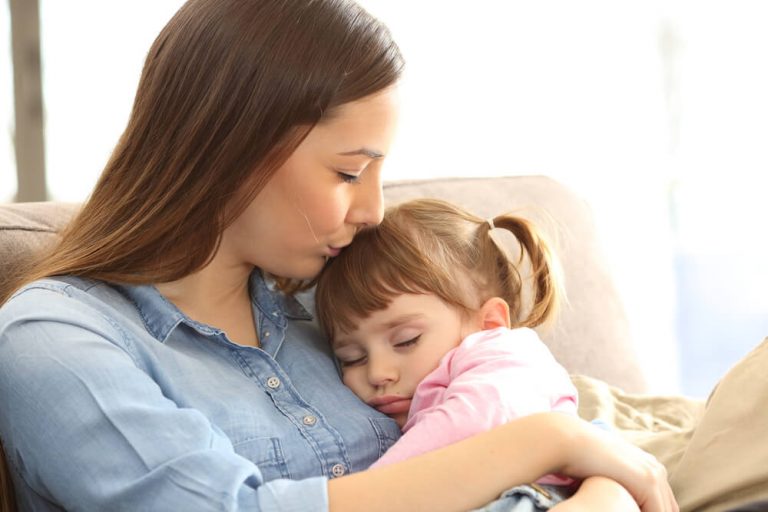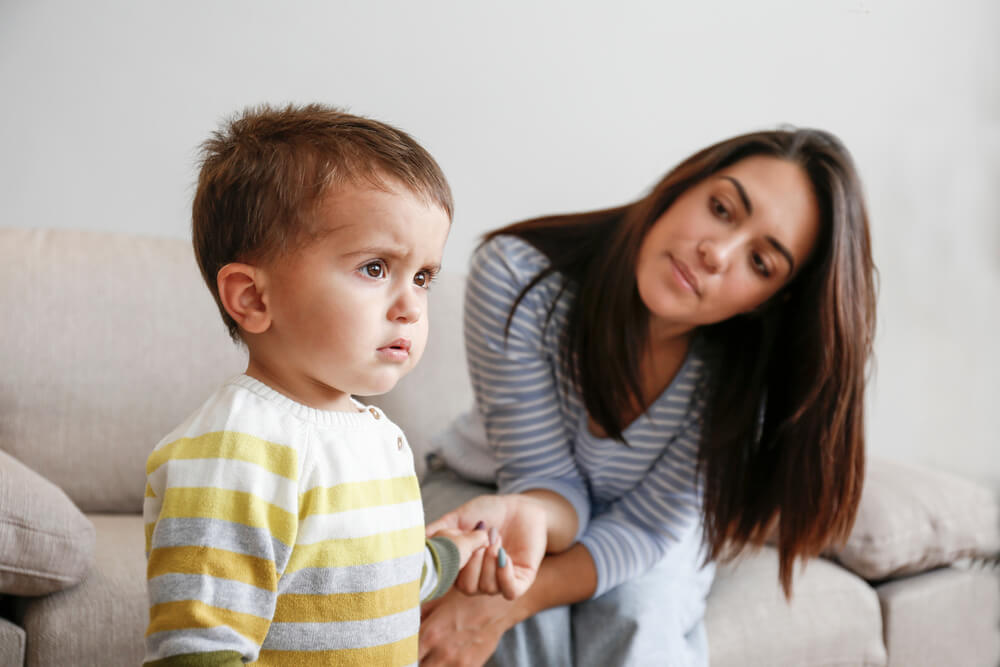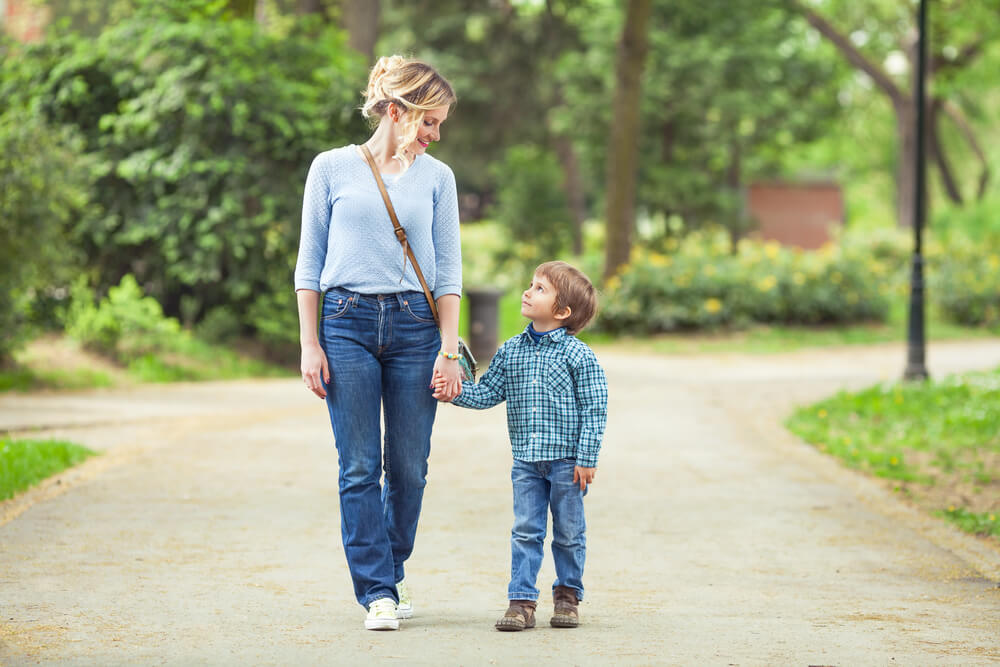Attachment Stages in Children: What Do Parents Need to Know

Every parent thinks about how to provide the best for their child. The modern world offers us a huge number of upbringing methods, mobile apps and early development classes. These are all important moments in a child’s life, however, they will not fulfill the task of development to the fullest in the event of a lack in the most important condition, which is the child’s attachment to their parents.
Contents:
- Attachment is a Basic Need
- The Theory of Attachment
- Six Stages of Attachment
- The First Year of Life: Attachment Through Feelings
- The Second Year of Life: Attachment Through Similarity
- The Third Year of Life: Attachment Through the Sense of Belonging
- The Fourth Year of Life: Attachment Through Significance
- The Fifth Year of Life: Attachment Through Love
- The Sixth Year of Life: Attachment Through the Need to be Understood
- The Responsibility for the Formation of the Attachment is on the Parent
Attachment is a Basic Need

shurkin_son/Shutterstock.com
A human being is a social creature whose survival depends on interaction with other people. Historically, humans have always lived in groups. Our children are born unfit for independence, and in the first years of life, they can only survive if they are cared for by adults. This feature forms one of the deepest human instincts—the need for closeness and contact, which is called “attachment” in psychology.
Attachment is considered to be an instinct, meaning that it is a basic unconscious need. It is not a choice, but rather a natural impulse to get “under the safe wing” of your older loved one, a parent, or a caring adult.
At the end of the XXth century, the English psychologist John Bowlby made a fundamental discovery that has had an effect on general psychology and, in particular, approaches to child development. He was working on researching the issue of early mortality in infant orphanages. Children in these establishments were receiving the necessary care, however, for some reason, they would become ill and die more often than those who were in less favorable conditions, but together with their families.
“Bowlby found that the most important condition for survival is not hygiene and proper nutrition, but rather the presence of close human contact, which the children in the orphanage were deprived of. They were not picked up to go home and were not praised for their achievements. Shocked by his discovery, John Bowlby came home and told his wife about it. He said, “Darling, I’ve made a very important discovery, I want to call it the Bowlby effect.” To which his wife replied: “Don’t be so arrogant, it is called love.”
The most important aspect of survival is human contact.
To be loved is the basic and most important need of every human being. It isn’t just to receive food and shelter, but also to feel attention in the form of physical and emotional contact.
The Theory of Attachment

Antonio Guillem/Shutterstock.com
As a psychological term, the word “love” was not suitable, so this phenomenon was called “attachment”. The attachment theory has become widespread in recent years, and it is currently one of the leading modern trends in child psychology. There has been plenty of evidence that the desire for affection is a basic survival instinct.
The need to be close to your loved ones and to feel a reliable continuous connection is how this concept can be described with simple words. If a loved one does not give the child such an opportunity, then the brain triggers a stress reaction that slows down their development as a consequence.
Watch a small child who is happily playing in their mother’s arms and exploring the world around them with curiosity. However, as soon as the mother leaves the child on their own, their focus of interest shifts towards anxiety and crying and their body begins to experience stress, which is incompatible with playing or active development. Not surprisingly, nature works in such a way that the survival instinct is placed above human development.
The child’s brain cannot develop if it is under stress.
That is why it is important for parents to understand that it is essential to create comfortable conditions in which the child feels safe, in order to ensure their development, and that the main factor of this would be a reliable sense of attachment.
Six Stages of Attachment

fizkes/Shutterstock.com
You don’t need to read complex psychology books or attend parenting training to see how attachment works. It would be enough to simply look at your child. Remember how small children cry alone and are frightened when their mother leaves the room, and how quickly they calm down in their arms.
Many of us know that in the first year of a child’s life, it is necessary to give them maximum physical contact, thereby laying out their foundation for the sensation of safety. This is called the first stage in attachment terms, which is attached through sensations.
However, not everyone is aware that the vital needs of the child do not end there, and, in fact, there are as many as 6 stages of attachment that are formed as the child is growing up. They can be compared with the roots that grow deeper in the mind of the child and become their support in life. The deeper and more widespread these roots are, the more stable and developed the child will become, just like the health of a tree depends on the strength of its roots.
The First Year of Life: Attachment Through Feelings

Ekaterina_Goncharova/Shutterstock.com
In the first year of life, the child forms an attachment through sensations. The more often you take the child in your arms, maintain bodily contact with them and, most importantly, comfort them in your arms when they feel bad, the closer their attachment to you will be formed.
You could watch how infants easily go into everyone’s arms, however, if you try to take an eight-month-old baby into the arms of someone they don’t know, they will get scared, start screaming and looking for their mother. Hence, the instinct of attachment in the first months of the child’s life forms a connection with those adults who are included in the notion of relatives. The world begins to be divided into “us” and “them”, and this is laid down by nature itself, in order to survive.
The Second Year of Life: Attachment Through Similarity

Vagengeim/Shutterstock.com
In the second year of life, the child is growing quickly. They begin to walk and are testing the potential of their body. During this period, the second stage of attachment is formed through similarity.
Remember how young children love to repeat everything after their parents? “When I was cooking, my one-year-old son immediately rushed to grab a knife to also cut vegetables, just like I did. Understanding the importance of this stage of development, I asked my husband to make the knife blunt and always gave it to my son, so that he could be with me in the kitchen and repeat after me”. This, of course, could hardly be called helping out, since it added cleaning work, nevertheless, the value of closeness with the child and the very vital development that they received during this lesson outweighed all of the inconveniences.
You should never deny the child’s initiative to repeat after you or their other relatives unless it was dangerous.
Cleaning dishes, copying mum’s make-up, or wearing dad’s pants are all signs of the formation of attachment. These simple things of family life should not be replaced by educational toys, early development classes or gadgets, as these moments of real closeness are the ones that form the basis of a child’s development.
The Third Year of Life: Attachment Through the Sense of Belonging

Nastyaofly/Shutterstock.com
In the third year of life, the child develops an ego and a feeling of being a separate person. The famous “three-year-old crisis”, with the child’s constant “I don’t want”, “I won’t do it”, is also associated with the need to have their own belongings and not allow anyone to take them. At this time, a third, deeper “root” of attachment based on belonging is being formed.
Have you observed the following situation: you are walking with your child and you meet a friend with a baby of the same age, whom you really want to cuddle in your arms, and if you get to do this and hug another baby, your child becomes worried. They run to you screaming “this my mom!” Here it is, the instinct of affection in a new form: to belong to one of the relatives. The child would ask me, “Are you my mother?”. “Yes, I am your mother, and you are my son and you will always be my child”. This is the correct answer that is very important for your child to hear.
These are the three stages of attachment that are most often formed quite naturally in a child’s good environment. There is no need to diminish their importance.
The more you will be providing physical contact, allowing the child to be like you, learning about life through you, also reminding them that they are your most beloved loved person, the deeper and healthier will be the roots of attachment on which the child will develop.
The remaining three stages are usually given less attention. This isn’t right, because they are no less significant and they represent the deeper roots that nourish the child’s development.
The Fourth Year of Life: Attachment Through Significance

evrymmnt/Shutterstock.com
The fourth year of the child’s life marks the emergence of an attachment through significance. The child develops the need to be close to their adults and at the same time, to experience the feeling of love and closeness coming from them. This should be felt by the child as something normal and constant.
The task of the parent is not to simply love their child, but to also help them to feel loved.
At the formation of this level of affection, we can notice how the child begins to ask questions, such as “Mom, do you love me?”, and demonstrates behavior that causes tenderness and praise, becoming very sweet, affectionate, taking care of their parents and trying to help. All drawings, even simple scribbles, and crooked clay figures that the child will give you must be saved and proudly placed in some area of the house that everybody can see, followed by you saying: “I really like it, well done.”
The child begins to develop self-confidence and a sense of self-worth. This time either contributes to the formation of a healthy personality or, on the contrary, to a development of a sense of one’s own inferiority, from which so many adults suffer nowadays.
If a parent rejects a child’s expression of certain emotions, such as when they become angry or express their needs, it is dangerous for the child’s psyche at the survival level. Once again, attachment and the willingness to be close to an adult is a matter of survival, which is more important than matters related to the development and personal happiness.
Under the influence of attachment, the child may begin to hide and suppress their needs and feelings in order to maintain closeness with their parents. For a parent, this often becomes an important area of work oneself: to learn to accept and maintain closeness with the child in all of the ways that it is manifested. Here, the question of discipline may arise: “How then can you teach a child to behave well?” This, perhaps, is a topic for a separate article, but here we will only say that it is important to distinguish the notions of not accepting some behavior and not accepting your child, as well as being able to understand this difference and to convey it to them.
The Fifth Year of Life: Attachment Through Love

fizkes/Shutterstock.com
In the fifth year of life, the warmest and most desirable root of attachment for a parent arises. It is called attachment through love. At this age, the child is ready to express their feelings. Whilst a three-year-old child says, “Mom, I love you,” rather just as an impulsive repetitive action, then by the age of five, with the right development, this will already be a conscious expression of a feeling. Children begin to confess their love to their parents, draw hearts and describe their feelings. This is a time when it is important to enjoy such manifestations with the whole family.
The Sixth Year of Life: Attachment Through the Need to be Understood

Alfira/Shutterstock.com
In the sixth year of life, the deepest, final root in the foundation and support of a child’s life is formed: it is the attachment through the need to be known. The child begins to feel that they are separated from their loved ones by secrets and mysteries. It becomes important for them to share their secrets. Here, the wisdom of the parent would lie in understanding the value of the child’s sincerity.
It is very important not to reject the child, even if they are sharing some potentially shameful things with you, and not to scold them, but to gladly accept this gift of fragile trust, which is so important for the child in order to create a deep attachment. Listening, supporting, and finding a solution together is what needs to be done in such situations.
Be attentive and sensitive to the vulnerable, little hearts of your children, which they are ready to open to you, being driven by the most important need in their life, which is attachment.
This completes the formation of attachment that takes place in the first 6 years of the child’s life in the scenario of a harmonious natural development process.
It is important to note that the previous stages of attachment do not disappear as a need, but rather are supplemented by the previous ones. Bodily contact, a sense of similarity, belonging—all of them remain important, while some additional levels are added to them.
Bonding may take longer to form, for many children. It is important not to take it as a completed process, as if the bond roots have grown once and for all. Attachment requires care and nourishment throughout our lives, and it is important to “water” and strengthen these “roots” throughout the entire time that you have got a connection with your child.
The Responsibility for the Formation of the Attachment is on the Parent

bokan/Shutterstock.com
Although the desire for attachment is an instinct, and the child is driven by it, the attachment may not form if the right conditions haven’t been created for it. The responsibility for the formation of these conditions lies on the parents. The roots of attachment want to sprout, but if the parents do not create the right soil for them, they will wither and will not turn into reliable support for the foundation of the child’s development.
The absence of a formation of attachment will lead to a number of unpleasant consequences both for the child’s personality and for the parent’s ability to have an influence on it.
These unpleasant consequences may include the following:
- tendency to anxiety;
- dependent behavior;
- lack of self-esteem;
- problems with aggression and emotions.
A lack of secure attachment also limits the parent’s role in raising their child, diminishing their ability to influence them, and undermining authority.
The parent’s task is to generously invite the child on a pathway toward attachment. This would mean the following:
- hug the child and hold their hand;
- allow them to repeat after you;
- involve them in joint activities;
- constantly remind the child that they are close, loved and very valuable to you;
- accept the child in all their manifestations;
- use proper disciplinary methods;
- love them and accept their love;
- create a trusting relationship in which the child can share the most intimate and vulnerable things and feel understood.

jsouthby/Shutterstock.com
The path of attachment is an emotional road toward the child’s heart, along which it is important for the parent to hold their child’s hand and to lead them, creating and maintaining a safe and close relationship over and over again.
Feeling love for your child and creating the feeling that they are loved, are two different things. It is important for each parent to find their own unique approach to the inner world of the child and make sure that a reliable attachment is formed in it.
When the foundation of a child’s vital support in the form of attachment is set, you can think about the additional developmental methods that will not interfere with your closeness with the child. The idea of sending a young child to an early development center with the thought that it will be more useful for them than the time spent with close family members, will perhaps be perceived as doubtful after reading this article.
It is important for parents to set their priorities in the right way: a closeness with relatives (formation of attachment) comes first, only after which comes the development through other means.
Our actions are a direct consequence of what we see and decide for ourselves. The child’s development will take place in the best and most natural way if the main decision would be to form the child’s attachment as a support in their life. You will witness a beautiful fruitful tree grow from the nourishment of healthy roots!
The picture on the front page: S.Borisov/Shutterstock.com
Проверьте электронный ящик



















